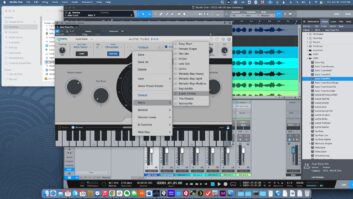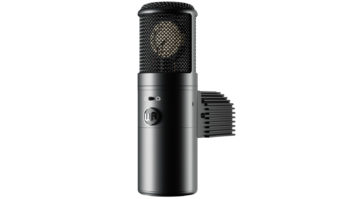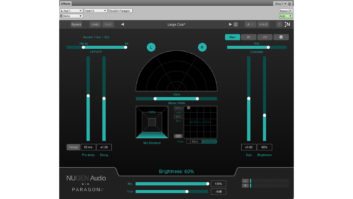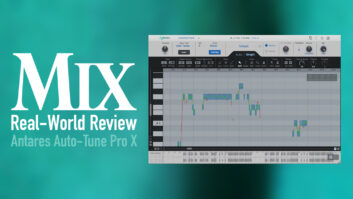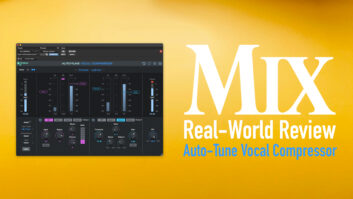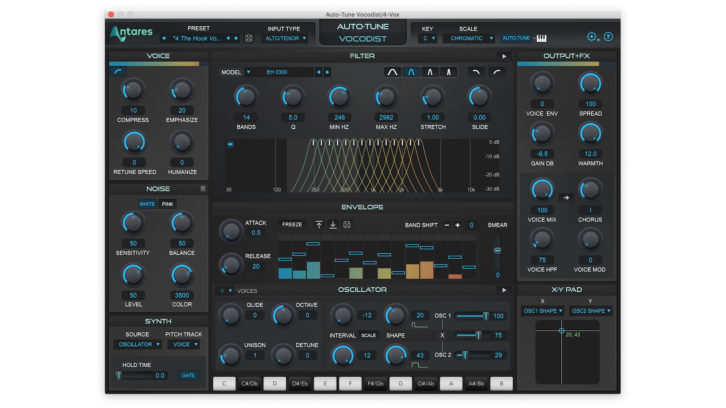
Of late, Antares has been releasing products that integrate Auto-Tune with different types of processing, a recent example being Auto-Tune Vocodist. It certainly makes perfect sense to have tuning available during vocoding. Not only does it let you tune the source voice, but also imbue it with the “Auto-Tune effect,” if you want.
But the built-in Auto-Tune is not the main story. This plug-in is an incredibly full-featured processor that includes 20 different vocoder choices, most of which are digital models of classic hardware units that you can dial up with a mouse click.
CLICK AND TURN
Sporting a large selection of adjustable parameters, including several built-in effects, Auto-Tune Vocodist requires some time to master. If you have an understanding of the vocabulary of synth programming, you’ll probably be up and running pretty quickly. Although the manual covers a lot of topics, I found myself wishing its entries went into more depth.
The user interface consists of three large sections in the middle: Filter, Envelope and Oscillator. To either side of these are smaller control areas called Voice, Noise, Synth and Output+FX, along with an X-Y Pad and a control bar on top.
In the Filter section, you can access a dropdown menu for switching the vocoder model. The list includes emulations of everything from Voder, which was created by Homer Dudley in the 1930s and was the first vocoder, to more modern units used by Daft Punk, Kraftwerk, Herbie Hancock and others.
You don’t need to be familiar with the characteristics or history of the vocoders modeled in the plug-in to take advantage of them. You can hear their different flavors by switching between them as your audio plays. You can even change the number of bands in each model. Every band has an Envelope slider that lets you adjust the volume of the corresponding filter bank, giving you control over which frequencies get emphasized.
Ocean Way Audio Pro3 – A Real-World Review
PUTTING IT TOGETHER
In a vocoder, a vocal track typically functions as the “modulator,” whose spectral content gets transformed by the “carrier.” In Auto- Tune Vocodist, the default carrier is an onboard, dual 8-voice oscillator (voices can be independently transposed). You can also use a sidechain signal from another track as the carrier.
The plug-in offers three options for controlling the pitch of the vocoding. The default is Voice, which uses the source track. Alternatively, you can set the pitch reference to MIDI input (either from an external controller or MIDI track) or with a one-octave keyboard called Key. For the latter, you click on a key and it transposes the output to drone at that pitch.
Antares included two dice-shaped randomize buttons. One is for the Envelope settings, and the other switches to a random preset. I found both helpful in creating settings. The X-Y pad is also useful, allowing you to assign many of the plug-in’s parameters and automate if desired.
The Voice section is where you adjust the Auto-Tune effect. If you’ve used Auto-Tune before, you’ll be familiar with parameters such as Retune Speed and Humanize. You can also add compression or turn up the Emphasize knob (high-end boost) to the signal before the Auto-Tune effect processes it.
The Output+FX section features a relatively subtle tube-distortion effect called Warmth, as well as a rich-sounding Chorus effect.
VOCODE BREAKERS
Auto-Tune Vocodist is available only to those who subscribe to Antares’ Auto-Tune Unlimited subscription program. That arrangement follows a recent trend where software developers provide subscribers with exclusive features or products. I understand that Antares is trying to incentivize people to subscribe, but I hope that Auto-Tune Vocodist might soon appear for separate sale.
That aside, it’s an excellent plug-in that provides the user with a ton of creative tools. Having Auto-Tune built-in gives it a twist that’s both helpful and unique.
Although it has a lot of parameters, I found it to be easier to adjust than other vocoding plug-ins I’ve used. Whether you’re creating robot-style vocals, adding pitch to a drum loop or going for a totally original effect, Auto-Tune Vocodist is an exceptionally powerful plug-in.
